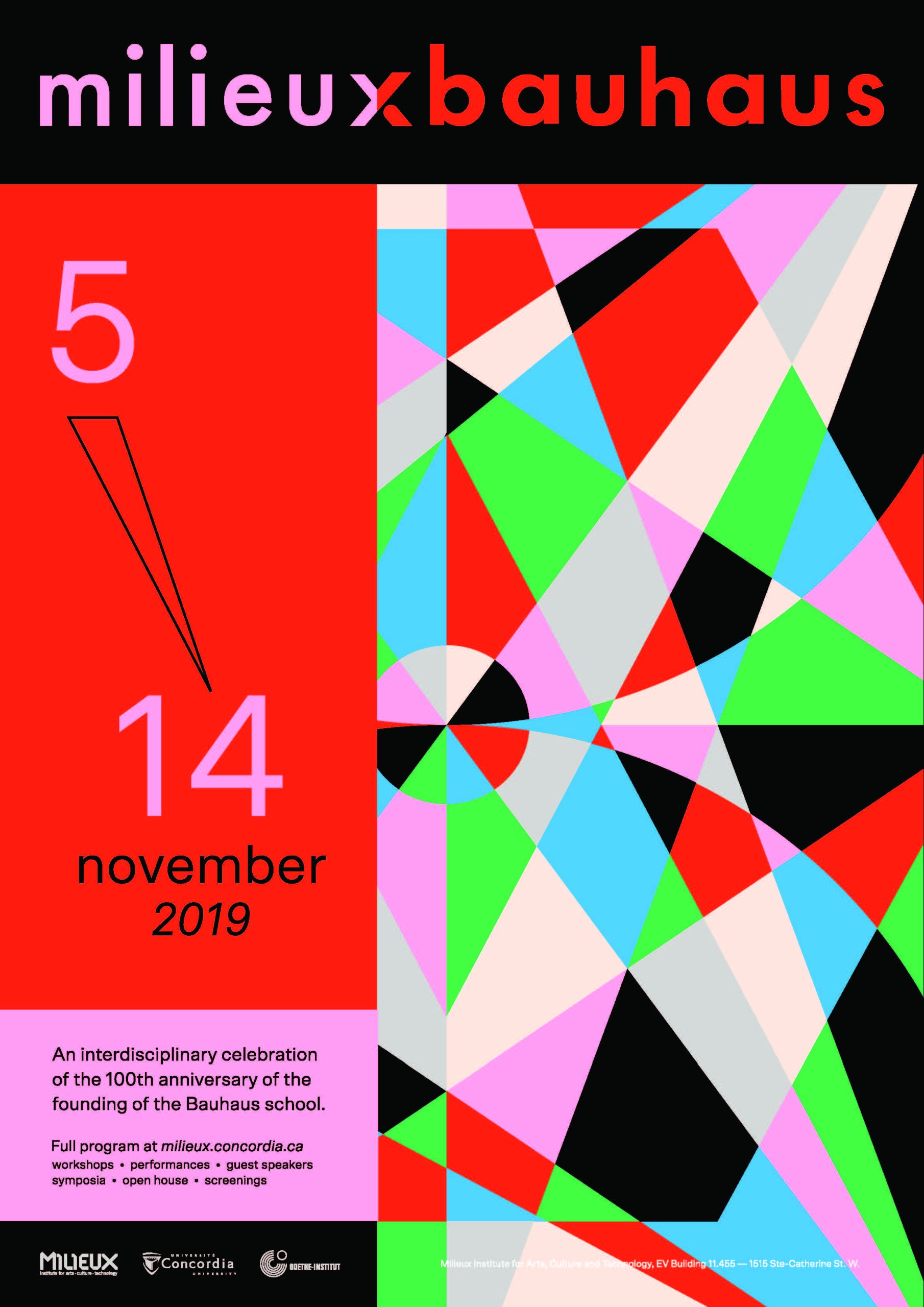
- This event has passed.
Panel discussion: Dance, Space, and Women in the Bauhaus
2019-11-07 | 14:00 - 16:00

Panelists: Julie Richard, Alison Peacock, and Hilary Bergen
- Alison Peacock presents: Space Dance: A lecture demonstration in 100 years of ‘space’
The masks of Oskar Schlemmer’s Space Dance are emblematic of the Bauhaus’s theatre workshop’s proposal to emphasize mathematical approaches to human movement by obscuring the emotional content of performing bodies, foregrounding dance’s formal and spatial qualities. Dance scholar Gabriele Brandsetter points to ‘three criteria – “metamorphosis”, “body-space relationship” and “abstraction.” – (which became) paradigms for Schlemmer’s exploration of kinetics as an experimental artistic process.’ (54) This lecture demonstration will emphasize and imaginatively reconfigure the experimental dimension of Schlemmer’s kinetic approach to movement and space, while considering multiple meanings of ‘space’ in the context of 2019.
2. Julie Richard présente: Créatrices avant tout! Le contexte d’apprentissage des femmes au Bauhaus et quelques réalisations majeures (en francais)
Le Bauhaus de Weimar, dès sa conception par Walter Gropius, est imaginé non seulement comme une institution propice au développement des expérimentations des concepteurs d’avant-garde et à la production en industrie de leurs prototypes, mais aussi comme un haut lieu d’apprentissage émancipateur et paritaire. Bien que le travail des femmes soit valorisé dès les premières années de fonctionnement du Bauhaus, certaines normes de division entre les sexes demeurent palpables dans sa structure, contribuant à minorer l’apport des femmes au sein de l’école. À la lueur des études féministes sur les genres, cette communication traitera des conditions d’apprentissage des femmes au Bauhaus ainsi que des apports esthétiques et techniques de certains travaux.
3. Hilary Bergen presents, “Why Humans at All?”: Oskar Schlemmer’s Triadic Ballet as Precursor to Digital Mo-Cap Choreographies
A 1923 review of Oskar Schlemmer’s Triadic Ballet critiques Schlemmer’s material enhancement of his dancers’ bodies through the use of costumes, stating that in concealing (or congealing) it under grotesque garments, the body is “deprived of its best in dance…making it into a soulless machine.”
My presentation imagines Schlemmer’s fantasy of body extension and the dancing puppet as a precursor to today’s computer choreographies, where motion capture technology is used to mine lively movement from the human body in order to animate avatar dancers and their CGI-prosthetic bodies and digital “costumes.” In putting Bauhaus-era representations of the body in conversation with digital-era embodiments, where “life” is often contingent upon mediation, I explore the historical link between the practice of dance and the concept of “soul” to consider how dance might articulate cultural ideas about agency, control and embodiment.
WHEN? Thursday, November 7, 2:00 p.m. – 4:00 p.m.
